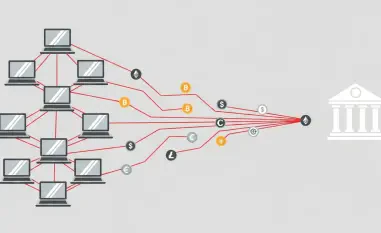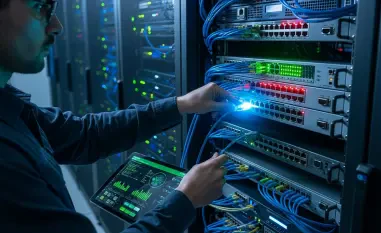Malik Haidar is a cybersecurity expert renowned for his extensive experience in tackling threats and hackers within multinational corporations. He seamlessly integrates business perspectives into cybersecurity strategies, making his insights highly valuable.
What are Initial Access Brokers (IABs)?
Initial Access Brokers are specialists who focus on exploiting vulnerabilities to gain unauthorized access to computer systems and networks. They sell this access to other cybercriminals, allowing these criminals to concentrate on more complex tasks like ransomware attacks. IABs typically use methods such as social engineering and brute-force attacks to breach systems.
What role do IABs play in the cybercrime ecosystem?
IABs play a crucial role by providing the initial foothold required for other malicious actors to carry out their operations. By selling access, they significantly reduce the risks involved in executing ransomware attacks. This division of labor not only mitigates their exposure but also streamlines the attack process for their clients, making it more efficient.
How do IABs typically operate?
IABs mostly operate on dark web forums and underground markets. They can function independently or be part of larger organizations like Ransomware-as-a-Service (RaaS) gangs, providing a critical link in the cybercrime chain.
Why have IABs gained prominence recently?
The prominence of IABs has risen due to their ability to streamline and accelerate ransomware operations. By handling the initial network infiltration, they allow ransomware groups to focus on data encryption and extortion. This efficiency is further enhanced by the direct collaborations with RaaS affiliates, which enable near-instantaneous attacks upon access procurement.
How has the targeting focus of IABs shifted in recent years?
Recently, IABs have broadened their scope, targeting a wider range of industries. In 2023, the business services sector saw the highest frequency of attacks, but 2024 has shown a more diverse spread across various industries. This shift likely indicates an adaptation to exploit vulnerabilities in different sectors.
Which countries are prime targets for IABs?
The USA remains a prime target due to its economic and technological significance. Brazil and France are also appealing due to the high value of their digital assets and business operations, making them attractive targets for cybercriminals.
What are the financial motives and pricing strategies of IABs?
The IAB market offers corporate access typically between $500 and $3,000. While prices have generally decreased, the average price has increased slightly due to a few high-value transactions. This strategy focuses on offering numerous lower-priced access points to maximize financial gains through volume rather than high individual sale prices.
How do lower-priced access points increase the threat posed by IABs?
Lower-priced access points make the services of IABs more accessible to smaller organizations. By attacking smaller targets through numerous access points, IABs can generate substantial financial gains and cause widespread damage, increasing the overall threat landscape.
What developments should we anticipate from IABs in the future?
IABs will continue playing a pivotal role in the cybercrime ecosystem. We can expect them to refine their tactics, strengthen ties with RaaS affiliates, and accelerate the speed and efficiency of cyber attacks. Proactive cybersecurity measures, including threat intelligence, continuous monitoring, and employee training, will be vital in mitigating the increasing threat posed by IABs.
Do you have any advice for our readers?
My advice would be to prioritize cybersecurity and stay informed about the evolving tactics of Initial Access Brokers. Implement comprehensive security measures, continuously monitor your systems, and educate your employees about the latest threats to safeguard your organization against the growing risks in the cyber landscape.













